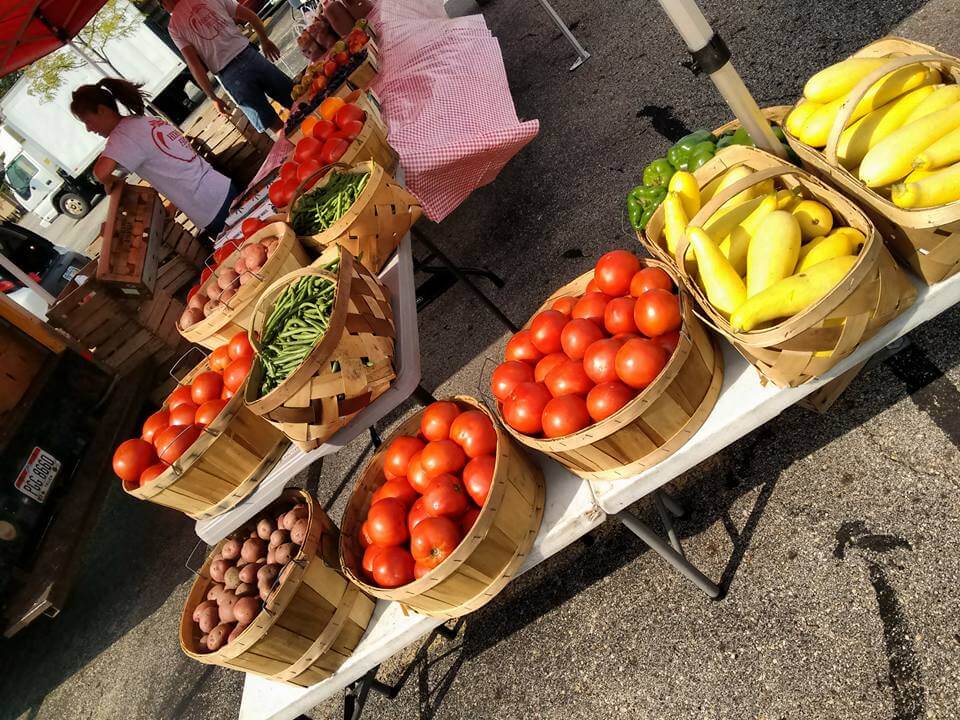
Hilliard Farmers’ Market 2016
May 18, 2016
Helping Ohio Create Win-Win Environmental Policies
July 19, 2016The plastic grocery bag, first introduced in supermarkets in 1977 as a cheaper alternative, has essentially replaced the paper bag in recent decades. And with this transition, a new environmental issue has emerged – what to do with the left over non-degradable plastic bags. Typically made of polyethylene (usually derived from petroleum or natural gas), this plastic bag is typically not acceptable for curbside recycling programs and often ends up as landfill trash or litter across the countryside and waterways. In an effort to address this problem, some communities have either established special recycling efforts, placed a tax on their use, or banned them outright. The best option, however, is not readily apparent.
It is estimated that approximately 100 billion single-use plastic bags are used in the United States each year in a variety of retail settings (U.S. International Trade Commission 2009). Although some customers request paper bags for their purchases, and some bring their own reusable cloth bags, the vast majority of consumers use plastic bags to transport their items (primarily groceries) home. In addition, many people reuse these bags around the house to either hold other items, line small trash containers, and/or collect pet waste.
Initial plastic bag recycling efforts have been established by a few retail companies (mainly large grocery chains), but this effort has not been very successful in that only a very small percentage of bags are recycled each year. It is estimated that the United States achieved a 7% annual rate of plastic bag recycling in 2007 (American Chemistry Council 2007), but less than 5% in recent years (Environment California 2013). Properly recycled plastic bags are used to make composite lumber and new plastic bags. In response to this very low recycling rate, some large store chains such as Whole Foods and IKEA have banned plastic shopping bags in the U.S. (GreenBiz 2008; Martin 2008), and some communities have drafted legislation to address the problem.
In the past 10 years, a number of cities have either taxed or banned the use of plastic bags in an effort to reduce landfill waste and litter, and even lower solid waste operating costs. In 2007, San Francisco became the first large city to ban the use of plastic bags at large grocery stores. In 2012, the city expanded the ban to include all retail stores and food establishments, and added a 10 cent charge on all paper and reusable bags. Additional California cities, such as San Jose and Los Angeles enacted similar legislation within the same timeframe, as did Austin and Brownsville, Texas and Washington, DC. Data collected thus far for each city are inconclusive, but for most the hopes of reduced landfill waste, litter and cost savings have not been realized. Only Brownsville’s program has generated revenues in excess of costs, primarily due to the $1 surcharge per transaction from consumers that is remitted to the city (Burnett 2013).
Instead of taxing or banning plastic bags, the City of Columbus is scheduled in 2016 to launch a year-long plastic bag pilot recycling program that targets up to 20 retailers along High Street and Morse Road. These areas have a high concentration of retailers, both large and small, and the goal is to increase the percent of plastic bags recycled (Columbus Business First 2015). The results of this study will help the city determine the best option moving forward, especially in light of the city’s five-year environmental sustainability goals.
So whether you tax, ban or recycle it, there is no easy solution to the plastic bag problem. Potential solutions include educational campaigns promoting the use of reusable cloth bags and increased recycling, as well as evaluating the use of biodegradable plastics. However, since this thin durable bag is versatile and used by many, it is apparently here to stay.
Sources:
American Chemistry Council. 2007. 2007 National Post-Consumer Recycled Plastic Bag & Film Report”. Available at: americanchemistry.com.
Columbus Business First. September 21, 2015. Available at: www.bizjournals.com/columbus/news/2015/09/21/instead-of-banning-plastic-bags-columbus-will-test.html
Environment California. Available at: www.environmentcalifornia.org/node/63/content/report
GreenBIz. 2008. “IKEA to Phase Out Plastic Bags in U.S.” GreenBiz. 2 April 2008.
Martin, A. 2008. “Whole Foods Chain to Stop Use of Plastic Bags”. The New York Times (1-23-2008).
Burnett, H.S. 2013. Do Bans on Plastic Grocery Bags Save Cities Money? National Center for Policy Analysis. Policy Report No. 353. 20 pp.
U.S. International Trade Commission. May 2009. “Polyethylene Retail Carrier Bags from Indonesia, Taiwan, and Vietnam”.




